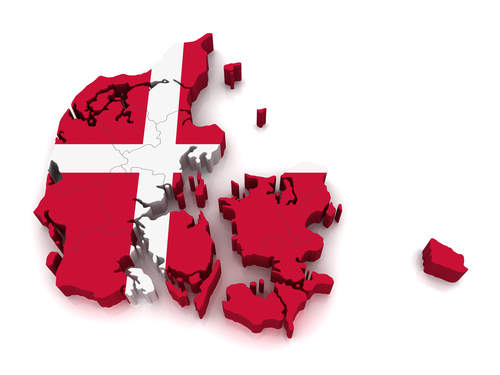
Danish banks are investing huge sums in mobile banking in an attempt to boost consumer confidence and revenue growth. Sandra Kilhof discusses how online banking and traditional branches are taking a back-seat to new mobile solutions.
Hard hit by euro zone turmoil and the banking crisis of 2008, Danish banks have struggled to regain trust and solid revenues, after a property bubble had serious implications for the Danish economy.
The industry was further shaken when Moody’s in 2011 cut the ratings of Danske Bank and four other major banks by one or two notches, leaving most Danish banks far below the ratings of neighbouring Swedish banks.
Along with a series of spectacular regional bank failures, the banking industry has had to win back the trust and confidence of the Danish public.
In December 2012 a study by the pollsters YouGov revealed that one in five Danes had changed banks since the beginning of the financial crisis in 2008. Further pressure was put on Danish banks after a study from Mybanker.dk showed that 20% of Danes were considering switching banks – double the amount compared with May 2012.

How well do you really know your competitors?
Access the most comprehensive Company Profiles on the market, powered by GlobalData. Save hours of research. Gain competitive edge.

Thank you!
Your download email will arrive shortly
Not ready to buy yet? Download a free sample
We are confident about the unique quality of our Company Profiles. However, we want you to make the most beneficial decision for your business, so we offer a free sample that you can download by submitting the below form
By GlobalDataFrank Pedersen – director of communications and marketing at Jyske.
Since then, Danish banks have been eager to cut costs and launch new strategies in the hopes that key customers will remain loyal. As such, banks have been shutting down branches and re-focusing their efforts on cheaper banking solutions, such as mobile and online.
According to Claus Bunkenborg, head of channel management at Danske Bank, the number of branches has reduced by 34% since 2008, from 373 branches to 215 branches as of March 2013.
"We have also announced a group level target, across all the markets where we operate, to reduce our branch network by 40% compared to the 2012 level of 228 branches", Bunkenborg adds.
Similarly, Nordea has cut down on the amount of branches significantly. Reducing its 319-large fleet of branches by 37% has been an obvious move as more and more Danish customers increase their use of digital channels, says Ken Adrian, head of segment household and group marketing at Nordea: "We have made a big transition in our branch network during the last 3 years. So far we are close to what we planned for – but we will continuously follow customer behaviour."
In comparison Jyske Bank retains 112 branches across the country and is not looking to reduce or increase the amount any time soon, says Frank Pedersen, director of communications and marketing at Jyske.
Nevertheless, a decrease in bank branches is becoming a national trend, and as a result, branch services are changing too. Across the board, Danish banks are experiencing a move towards advisory services.
The time spent on manual transactions has gone down dramatically and the need for advisory services has gone up, says Adrian:
"Our transition of the branch network means that approximately 1/3 of branches only concentrate on advisory services currently and therefore don’t provide any cash services".
For Danske Bank, a serious reduction in staff means that only 55 of the remaining branches offer a teller service, and branches have been re-named advisory centres.
"Apart from removing teller services we have a constant focus to reduce the administrative work from branches, either through automation or through centralising such tasks. We are currently running a major lean programme in order to manage this transition," explains Bunkenborg.
The move to close down branches has largely been prompted by banks looking to foster revenue growth, after increased account switching and bad investments left some Danish banks with low solvency after the financial crisis. However, an increasingly important factor is the transition from traditional banking to digital banking.
With regular upgrades of online and digital banking platforms, Jyske, Nordea and Danske Bank are looking to further increase the amount of e-banking users.
With more than 900,000 e-banking users out of 1.5m bank customers, Nordea is eager to move in pace with the customers, says Adrian. He describes their online strategy as being available anywhere and anytime, offering services across all channels:
"There is a constant trend towards increased On-line/Mobile banking usage. The bank is supporting this via continuous functional improvements, active support as well as marketing and information activities".
The strategy is similar to that of Danske Bank, where digital banking across several platforms has resulted in 69% of its customers actively using eBanking, amounting to a total of 1.25m active users: "Our online banking strategy is to offer our customers a full digital banking capability across all relevant platforms: eBanking, mobile and tablet banking. The solutions we offer must not only be relevant and reliable but also be simple and convenient to use and highly accessible", says Bunkenborg, adding that Danske has completely redesigned its online banking solutions over the last couple of years.
Recent initiatives include support of digital ids for identification and digital signing of agreements; a completely new design and navigation structure; launch of personal financial management tools such as a spending overview integrated in the online account statement and the introduction of online video meetings, where a customer securely can meet with his or her advisor.
Jyske Bank completely replaced its e-banking solution, Netbank with a new platform in October 2012. The upgrade also included a new back-end for Jyske’s mobile bank.

The move is part of a greater strategy to "transform the online bank from a transaction platform mainly to a sales platform primarily", says Frank Pedersen.
Upgrades and digital strategies aside, Denmark’s internet banking statistics would appear to offer scope for major growth. Internet banking penetration in 2012 only amounted to 42.3%, according to a comScore report, falling far behind neighbouring Sweden which had 54,2% of its internet users visit online banking sites in 2012.
Just ahead of the European average of 39.9%, RBI asked whether the Danish banks are considering it a priority to ramp up internet banking penetration.
Claus Bunkenborg of Danske Bank has a clear reply: "Yes, but given the numbers quoted above from our own statistics I have a problem with recognising the comScore figures. With a market share of 32% we believe our internal observations are quite representative for Denmark", he says, referring to the high amount of active users of Danske’s e-banking solution.
Yet Danske still considers it a priority to improve online banking penetration, especially amongst two customer groups who are not yet actively using e-banking solutions: "We are currently developing a new eBanking solution aimed at the specific needs of elderly customers who for instance need a user interface with fewer options, more visual guides etc. We also cater to customers who are sceptical towards online solutions and need guidance and reassurance.
Here we have various training programmes, pro-actively promote self-service solutions to customers who call the bank with simple enquiries, and we have strengthened the fee incentive to use self-service," Bunkenborg explains.
Similarly, Jyske isn’t concerned with the comScore statistic, and therefore won’t be going above and beyond to improve e-banking specifically: "Instead it’s our ambition to be on every platform, where the customers want to be served", Pedersen adds.
According to Danske Bank and Nordea, the comScore report does not take into account that visitors of e-banking solutions might access the online bank via an app for mobile phones or tablets.
Both banks agree that other digital banking platforms have gained enormous traction amongst Danish consumers in recent years, and as such, the amount of users logging on to an online bank via the computer has gone down. Instead, easy access via apps has become a popular choice, says Bunkenborg: "We launched our mobile banking solution in September 2010 and our tablet banking solution in December 2011. Since then the mobile app has been downloaded more than 630,000 times and logons to mobile banking now represent 43% of all monthly logons to our online banking solutions.
"The tablet app has been downloaded more than 170,000 times and represents 7% of all monthly logons. Since the launch of these new solutions the total number of logons has increased by 40% but the number of eBanking logons using a PC has dropped 30%".
With over 200,000 active mobile users, Nordea’s Ken Adrian agrees that mobile banking is becoming the preferred option to online: "Mobile is booming and has really got the big interest in the market, the trend is that more customers tend to rely on their mobile devices as their primary, sometimes only source for everyday banking", Adrian says, adding that customers also are moving from only checking their balance via the mobile and tablet apps towards more elaborate services.
Nordea currently offers a range of mobile services, including viewing balance and account details and transactions, payments and transfers, managing cards and dealing with loans to a limited functionality. The functions are accessible via a browser based solution or via native apps for iPhone, iPad, Android phones and Windows phones.
Jyske and Danske Bank also offer similar mobile banking services with the range of functionality available being constantly improved. Most recently Danske launched a mobile payment solution offering all Danes the possibility to make peer-to-peer payments using only a mobile phone number.
As part of Jyske’s strategy to transform its digital banking platform to a sales platform, rather than purely being based on transactions, Jyske has included key trading services as part of the latest update to their mobile banking app.
With a quarter of all Jyske customers using mobile banking, the app has enjoyed a 3% growth over the past year, says Pedersen: "Digital banking is becoming more and more important, and people love the convenience in doing banking anytime, anywhere", says Pedersen, adding that their digital products have played a key role for Jyske in recent years: "From day one we managed to establish a very clear connection between our stores and the digital world of Jyske Bank, which means that our digital world, through thoughtful design, has become a very important brand enabler".
Generally, all three Danish banks have received good customer feedback on the new digital solutions, which provide convenience and functionality, as opposed to traditional banking.
Having said that, Bunkenborg points out that, "the biggest challenges are in not getting an otherwise user-friendly customer experience cluttered by legal disclaimers, request for consent, security issues etc."
Danske’s exec concludes: "There is of course a portion of our customers who prefer to do their banking in the "old" physical world, and we try our best to demonstrate the benefits of the "new" way to do banking. We cannot motivate all, but the vast majority are with us on this journey".







